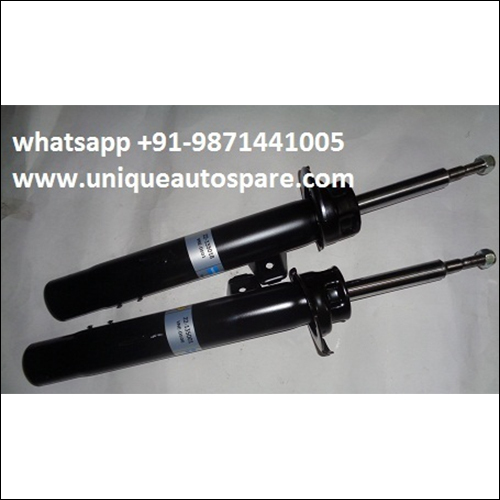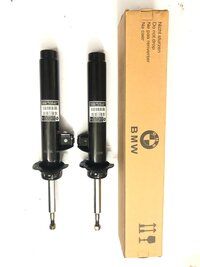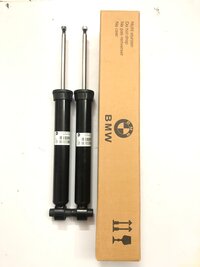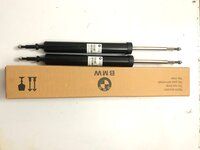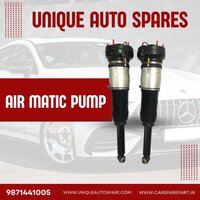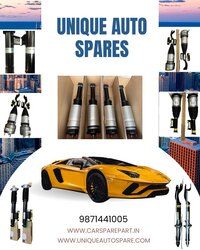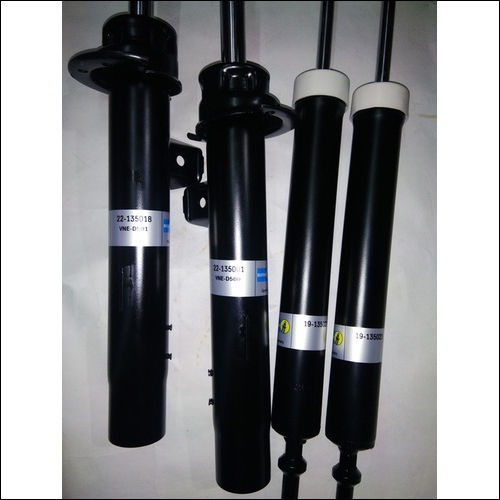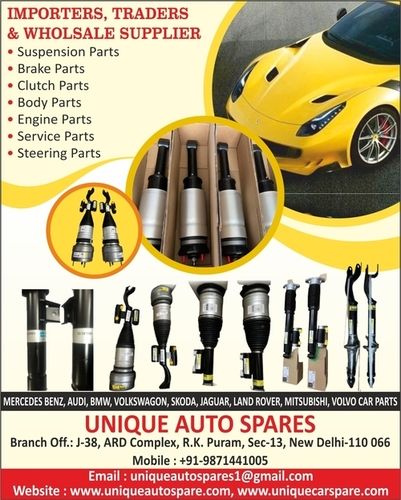Front shocker for E90 car
Product Details:
- For Use In Automobile Industry
- Warranty 1
- Model No 2013
- Product Type Front shocker for E90 car
- Material Steel
- Click to View more
X
Front shocker for E90 car Price And Quantity
- 15 Unit
Front shocker for E90 car Product Specifications
- Front shocker for E90 car
- Steel
- 1
- Automobile Industry
- 2013
Front shocker for E90 car Trade Information
- 1000 Unit Per Day
- 1 Days
- cardboard box and cover with sack
- All India
Product Description
Shock absorbers (often referred to as shockers) are essential for maintaining ride comfort and vehicle control in your BMW. They work by absorbing and dampening the impact from the road, ensuring a smooth ride and improving handling. Hereïs a comprehensive guide on BMW shock absorbers, including types, signs of wear, and replacement instructions.
Types of Shock Absorbers:
-
Standard Hydraulic Shock Absorbers:
- Use hydraulic fluid to absorb impact.
- Common in many BMW models for standard driving conditions.
-
Gas-Charged Shock Absorbers:
- Combine hydraulic fluid with pressurized gas.
- Offer improved performance by reducing aeration.
-
Adjustable Shock Absorbers:
- Allow for manual or automatic adjustment of damping force.
- Ideal for drivers seeking customizable ride comfort and handling.
-
Electronic Dampening Control (EDC) Shock Absorbers:
- Electronically adjust damping in real-time based on driving conditions.
- Found in higher-end BMW models for superior ride quality.
Signs of Worn Shock Absorbers:
- Bumpy Ride: Increased road vibrations felt through the car.
- Poor Handling: Reduced stability during cornering and braking.
- Nose Diving: Excessive front-end dip when braking.
- Excessive Body Roll: Increased leaning or swaying in turns.
- Fluid Leaks: Visible hydraulic fluid leaks from the shock absorbers.
- Uneven Tire Wear: Irregular tire wear patterns due to inconsistent damping.
Replacing Shock Absorbers:
Tools and Materials Needed:
- New shock absorbers (specific to your BMW model)
- Jack and jack stands
- Lug wrench
- Socket set and wrenches
- Torque wrench
- Penetrating oil (for loosening bolts)
- Spring compressor (if replacing struts)
- Safety glasses and gloves
Steps to Replace Shock Absorbers:
-
Preparation:
- Park the vehicle on a flat surface and engage the parking brake.
- Wear safety glasses and gloves for protection.
-
Lift the Vehicle:
- Loosen the lug nuts on the wheels.
- Use a jack to lift the vehicle and secure it with jack stands.
- Remove the wheels to access the shock absorbers.
-
Remove the Old Shock Absorbers:
- Locate the shock absorbers and identify the mounting points.
- Apply penetrating oil to the bolts and let it sit for a few minutes.
- Use a socket set to remove the bolts securing the shock absorbers to the suspension and chassis.
- Carefully remove the old shock absorbers.
-
Install the New Shock Absorbers:
- Position the new shock absorbers and align them with the mounting points.
- Insert and hand-tighten the bolts to hold the shock absorbers in place.
- Use a torque wrench to tighten the bolts to the manufacturerïs specified torque.
-
Reassemble the Vehicle:
- Reinstall the wheels and hand-tighten the lug nuts.
- Lower the vehicle to the ground using the jack.
- Use a torque wrench to tighten the lug nuts to the manufacturerïs specifications.
-
Final Checks:
- Test drive the vehicle to ensure the new shock absorbers are functioning correctly.
- Listen for any unusual noises and check for any leaks or loose fittings.
Selecting the Right Shock Absorbers:
- OEM vs. Aftermarket: Original Equipment Manufacturer (OEM) parts are made by the vehicleïs manufacturer, while aftermarket parts are produced by other companies. OEM parts typically ensure perfect fit and performance but can be more expensive. Aftermarket parts offer a wide range of options and prices.
- Performance Needs: Choose shock absorbers based on your driving style and needs. For standard driving, OEM or equivalent aftermarket parts are sufficient. For performance driving, consider high-performance or adjustable shock absorbers.
Enter Buying Requirement Details
Other Products in 'BMW Car Parts Dealer' category
Back to top

